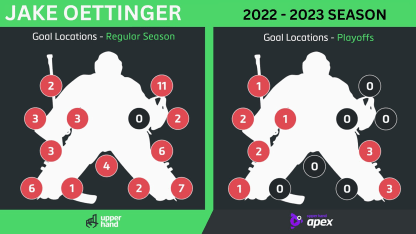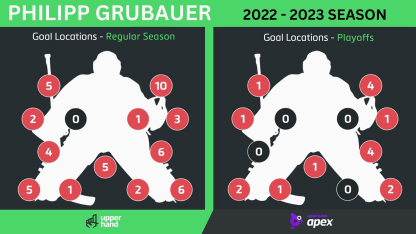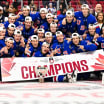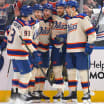Goaltending is an integral part of the Stanley Cup Playoffs. To better understand the strengths and weaknesses of each goaltender, the last 50 goals allowed for each goaltender in the regular season and every goal in the playoffs were charted, with the help of Apex Video Analysis and Save Review System from Upper Hand Inc., to see what patterns emerge.
Oettinger vs. Grubauer goalie matchup in Western 2nd Round
Stars starter adept at read and react, Kraken No. 1 uses signature narrow stance to beat passes

© Getty Images



















